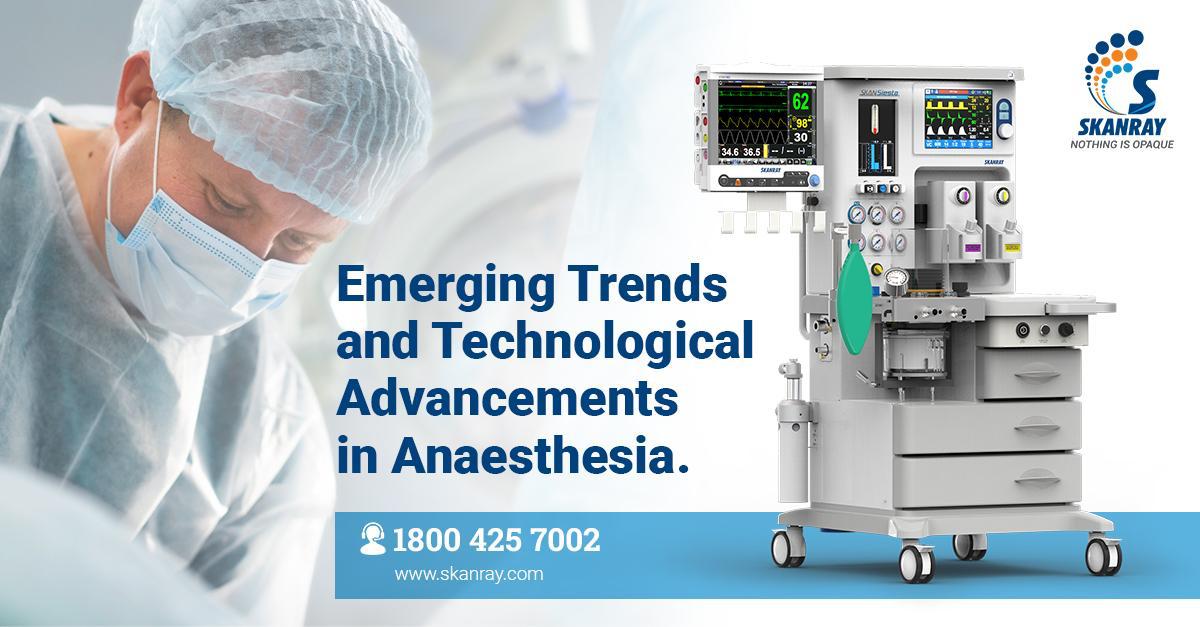Emerging Trends and Technological Advancements in Anesthesia
- Blogs
- Posted on
-
by scanrayadmin
- 0 comments

Blogs
Home/ Blogs
Emerging Trends and Technological Advancements in Anesthesia

The field of anesthesia technology has undergone transformative advancements, redefining patient care and surgical outcomes. From the early days of inhalation anesthesia to the latest innovations in artificial intelligence and lung-protective ventilation, these advancements underscore a commitment to safety, precision, and efficiency.
The Evolution of Anesthesia Technology
The journey of anesthesia technology began with the introduction of inhalation agents like halothane and isoflurane, which revolutionized surgical procedures. This era gave rise to specialized anesthesia machines that precisely administer inhaled agents, significantly improving outcomes.
Subsequent advancements introduced vital monitoring technologies, such as pulse oximetry, capnography, and advanced blood pressure monitoring. These tools provided real-time insights into patient parameters, enhancing safety during procedures.
Total Intravenous Anesthesia (TIVA): A Game-Changer
The emergence of Total Intravenous Anesthesia (TIVA) marked a pivotal phase in anesthesia. By allowing precise drug delivery through intravenous methods, TIVA offered an alternative to traditional inhalation techniques. This innovation improved accuracy and patient comfort, establishing a new standard in anesthesia delivery.
Closed-loop Anesthesia Systems: The AI Revolution
A groundbreaking development in the field is the rise of closed-loop anesthesia systems, which integrate real-time patient data and artificial intelligence (AI) to deliver personalized, adaptive anesthesia. These systems reduce the variability in dosing inherent in traditional methods, ensuring a stable anesthetic state and minimizing adverse events.
Advanced Ventilation and Low-Flow Anesthesia
Innovations in lung-protective strategies have further elevated anesthesia practices:
- High-flow nasal cannula (HFNC) oxygen therapy: Prevents hypoxemia during surgeries with prolonged apnea risk by delivering humidified and heated oxygen at high flow rates.
- Bellows-less ventilator technology: Represents a shift from traditional systems to advanced piston-driven and volume reflector technologies, offering enhanced precision in gas delivery.
- Low-flow guidance software: Integrated into modern anesthesia machines, this technology supports safe and efficient low-flow anesthesia, aligning with global efforts to reduce resource usage and improve surgical outcomes.
A New Era in Anesthesia Practices
The commitment to integrating advanced technologies like AI-driven systems, low-flow software, and high-precision ventilators has marked the beginning of a new era in anesthesia. These innovations promise improved healthcare efficiency, better patient outcomes, and enhanced satisfaction in both surgical and critical care settings.
Meta Information:
Meta Title: Emerging Trends and Technological Advancements in Anesthesia
Meta Description: Discover how emerging trends like AI-enabled closed-loop systems, TIVA, HFNC oxygen therapy, and low-flow anesthesia are transforming anesthesia practices for enhanced patient care.
Meta Keywords: anesthesia technology, TIVA, closed-loop anesthesia systems, AI in healthcare, HFNC oxygen therapy, low-flow anesthesia, lung-protective ventilation, advanced ventilators, patient safety in anesthesia, medical technology.
Keywords:
- Anesthesia technology
- TIVA
- Closed-loop anesthesia systems
- Artificial intelligence in healthcare
- HFNC oxygen therapy
- Low-flow anesthesia
- Lung-protective ventilation
- Advanced ventilators
- Patient safety in anesthesia
- Medical technology

